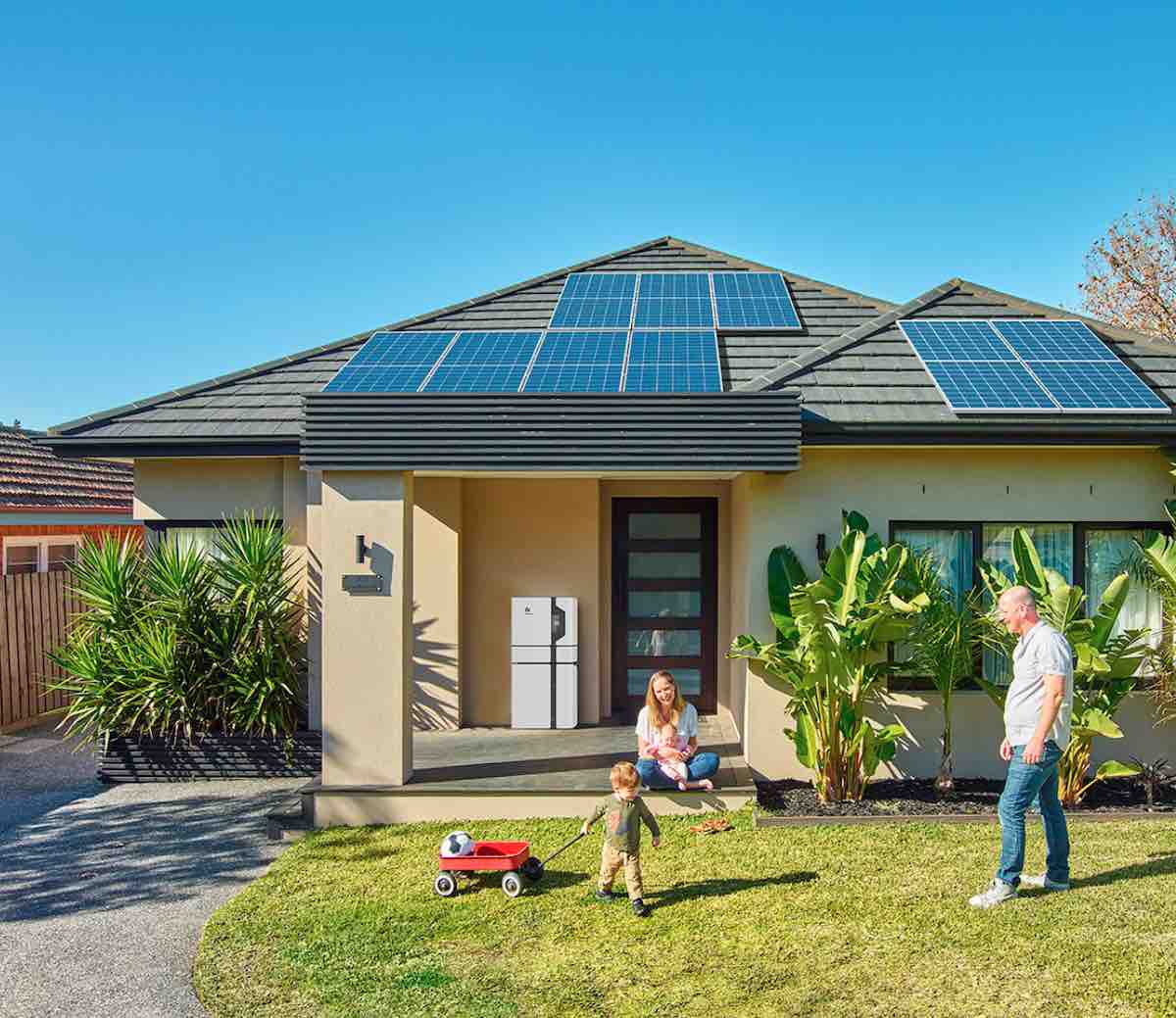

Image: EnergyAustralia
Queensland has opened its $10 million Battery Booster scheme to some 2,000 households in the state but experts want more to support the consumer energy transition.
The program will pay a $3000 rebate for households on an income of $180,000 or less who also have, or are installing rooftop solar systems with a capacity of 5kW or higher.
Households with an annual income of less than $66,667 a year can access a slightly higher rebate of $4000.
Solar Citizens CEO Heidi Lee Douglas says the concern is that during a cost-of-living crisis, people in those income brackets won’t be able to afford a battery anyway.
“So what we’d like to see is the commonwealth government match these rebates,” she told OneStepOffTheGrid.
“We have been pushing the state and federal governments for battery rebates in combination with no interest loans because that’s the sweet spot that we’ve been told from industry that makes it a doable proposition for residents in a cost of living crisis.”
Currently, Queenslanders can access the new program, and battery rebates are already on offer in all states bar Tasmania, where the government offers a no-interest loan for general household energy upgrades. The federal government’s Household Energy Upgrades Fund will soon offer low-interest loans.
Clean Energy Finance director Tim Buckley says the program is just one of a number that is needed, and has one worry – that it could be a repeat of the boom and bust home insulation program. He’d like to see it rolled out on a more limited monthly basis to allow for installers to plan, build out supply chains, and train apprentices and new staff.
All slots are available from today and the government will do a review once the fund is fully used.
The Queensland program already has 100 installers on the approved list and batteries from 46 brands, all of which have a capacity of 6 (kWh) or higher.
With about 150 rooftop solar installations every day, Queensland has the highest rate of rooftop solar installations Australia, de Brenni said in a statement.
“The new Battery Booster initiative invites eligible Queenslanders to make the most of Queensland’s mighty sunshine, to help keep household bills down,” he said.
“We’ve targeted this program specifically at those households who may not have previously considered purchasing a solar battery.”
The government signed off on legislation to set up the scheme in December last year.
But it did come just 18 months after de Brenni told the ABC that investing in the grid was a better way to bring down power prices than handing out rebates to individuals.
“We think the thing that makes the most sense for the most households is to invest in large-scale storage,” he told the national broadcaster.
In response to questions from OneStepOffTheGrid, de Brenni said they had “listened” as cost of living pressures became acute.
“It has become clear that in addition to our big commitments to invest in our grid, it is essential to help consumers, especially those on lower incomes to be able to access resources to lower their bills and emissions,” he says.
To date, the Queensland government has paid a $550 energy rebate to every household and offered cash back on energy efficient appliances.
“We want to help kick start battery ownership. We want batteries to take off in Queensland, and we want to make them here.”
Queensland has a renewable energy target of 80 per cent by 2035. Premier Steven Miles has promised to legislate a new emissions reduction target of 75 per cent by then, too.
The government’s new position on batteries could reflect the fact that consumer energy resources are the quickest route towards the energy transition, today, due to the lengthening timelines for big transmission and generation projects.
The expectation is that adding batteries to Queensland homes will somehow lower transmission and distribution costs for everyone.
“Roughly half of everyone’s power bill is the cost of transmitting and distributing electricity throughout our massive poles and wires energy grid, but every household battery avoids these expenses and any discharge from the battery to the grid lowers the cost of our entire electricity system. This is the untold story of batteries in our homes,” says Smart Energy Council chief executive John Grimes.
Buckley says shifting focus to consumer energy resources such as batteries, and finding ways to help people afford them, is the way to accelerate the energy transition today.
“We clearly know grid transmission is going to take a long time. We’ve got to get moving now. I think Australia should be very aggressively pursuing consumer energy resources,” he told OneStepOffTheGrid.
“We deployed 3.2 GW of rooftop solar last year, the second highest on record and up 14 per cent year-on-year. But we should be doing 4-5 GW a year, and planning for it.”
AEMO is forecasting the National Energy Market (NEM) alone will incorporate 85 GW of rooftop solar by 2030, a five-fold increase on today’s figures.
This post was published on February 12, 2024 1:32 pm
Australians are often being misled when they try to make sustainable electrical appliance choices, and…
China EV giant bows to trend of offering "complete solutions" for home energy, with launch…
NSW Energy and Water Ombudsman Janine Young unpacks the surge in energy complaints and explores…
New data shows home battery installations had a bumper second half in 2024 – but…
Anibal Zarate's family lived so well through Tropical Cyclone Alfred that even his sceptical neighbours…
Round two of state battery program announces new winners, including a major charity group to…